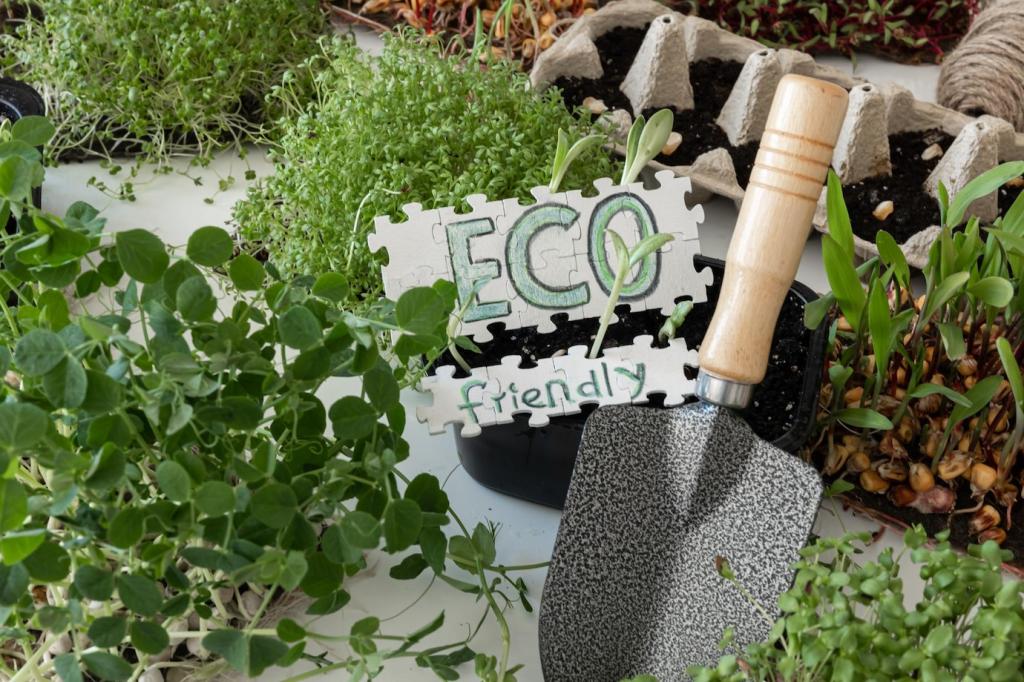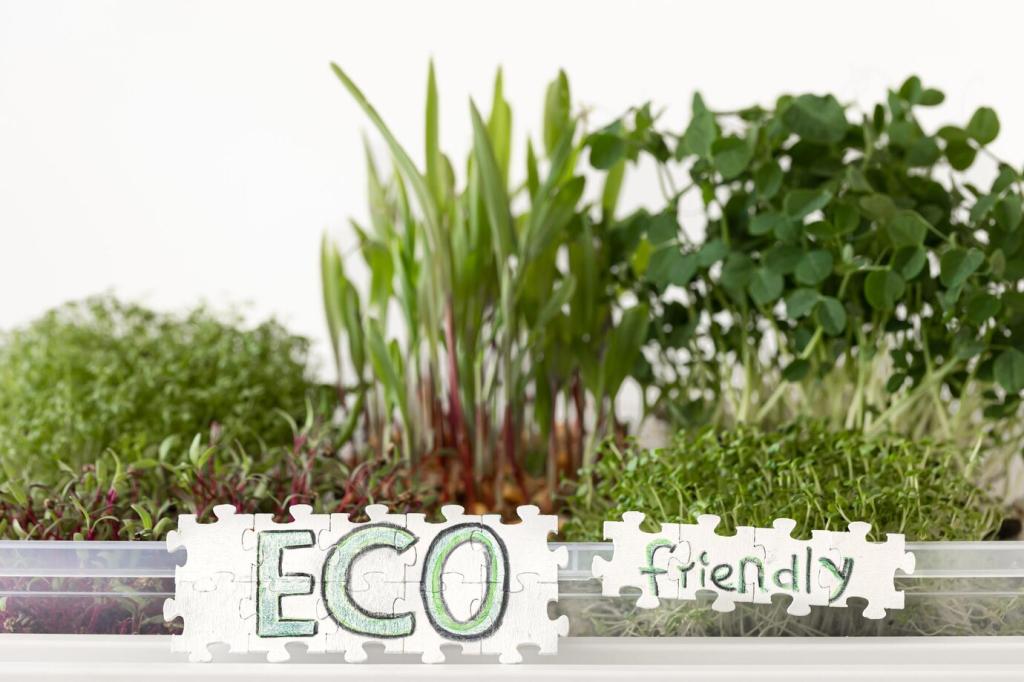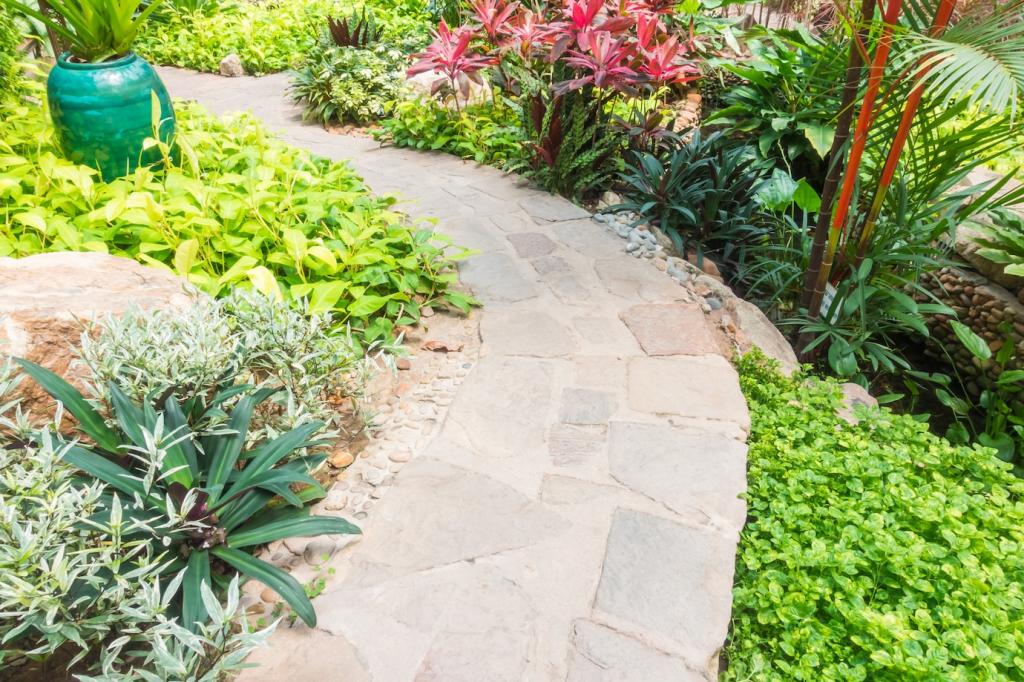
Permeable Paving Options for Eco-friendly Yards
Welcome to our deep dive into Permeable Paving Options for Eco-friendly Yards. Discover beautiful, practical surfaces that let rain soak in, reduce runoff, and turn your outdoor space into a resilient, climate-smart sanctuary. Subscribe for more green-yard inspiration.
How Permeable Paving Protects Your Yard and Watershed
Permeable paving is engineered to let rain pass through tiny gaps or pores, recharge the soil, and reduce puddles. Instead of rushing toward drains, water sinks in, nourishing plants and easing the burden on local stormwater systems.


How Permeable Paving Protects Your Yard and Watershed
As stormwater filters through the base layers beneath permeable surfaces, sediment and some pollutants settle out. This natural filtering helps protect creeks and rivers, supporting healthier aquatic life and reducing downstream erosion during heavy rains.
Choosing the Right Permeable Material
Modular Permeable Pavers and Grids
Concrete or clay units with widened joints, plus open-cell plastic or concrete grids, create stable surfaces that welcome water. Fill joints with clean aggregate or turf for a driveway, patio, or path that looks crisp and drains beautifully.
Resin-bound Gravel and Stabilized Paths
Resin-bound gravel locks decorative stone together while staying porous, delivering a smooth, elegant finish. Honeycomb stabilizers also keep loose gravel in place, ideal for garden paths that resist ruts yet remain friendly to rain and roots.
Porous Concrete and Asphalt
These monolithic surfaces contain interconnected voids that allow water to pass through. They shine in larger areas like driveways or parking bays, offering a clean, modern look with stormwater performance when paired with a well-designed base.



Installation Steps and Common Mistakes
Prepare the Subgrade Thoughtfully
Strip organics, protect tree roots, and achieve a uniform, firm subgrade without over-compaction that seals the soil. Install a geotextile separator if needed, then place open-graded aggregate in lifts, compacting evenly to maintain porosity and stability.
Set Layers and Joints for Success
Use clean, angular stone for the base and bedding layers. For pavers, keep joints uniform and fill with washed aggregate. Avoid fine sands that migrate and clog; edge restraints maintain alignment through seasons and everyday use.
A Homeowner’s Lesson Learned
One reader rushed installation before a forecasted storm and skipped joint stabilization. The first downpour washed fines into the pores. After redoing it with washed stone, performance soared—proof that patience and clean materials truly pay off.

Sweep regularly, and vacuum sediments with a shop vac or specialized unit when pores begin to slow. A simple spring and fall routine keeps water flowing freely, preventing clogs that lead to puddles, weeds, and frustration after storms.

Top up aggregate in joints as needed and brush away debris before it settles. Trim nearby vegetation thoughtfully so leaves do not accumulate, and keep edges secured to prevent creep that opens gaps and invites unwanted runoff.

Use plastic shovels and gentle de-icers labeled safe for permeable systems. Avoid sand, which clogs pores. Many owners report less refreezing because water drains away, making winter maintenance surprisingly manageable on permeable surfaces.

Patterns, Colors, and Texture
Mix complementary paver tones, add borders, and vary joint widths for character. Resin-bound blends can echo your home’s palette. These touches elevate curb appeal while staying true to the theme of a genuinely eco-friendly yard.
Planting Between Pavers
Use low-growing groundcovers or hardy native plugs in wider joints or adjacent beds. They soften the surface, absorb more rainfall, and invite bees and butterflies—turning functional permeability into a lively, biodiverse garden feature neighbors admire.
Pair with Rain Gardens and Swales
Direct overflow to a small rain garden or shallow swale planted with native species. This layered approach manages heavier storms gracefully, spreads water across the landscape, and strengthens your yard’s resilience to unpredictable weather.
Costs, Value, and Climate Resilience
Upfront Versus Lifetime Costs
Permeable systems may cost more initially but often reduce drainage infrastructure, erosion repairs, and water-related headaches. Smart materials plus light maintenance stretch value, especially when incentives or stormwater fee reductions are available locally.

